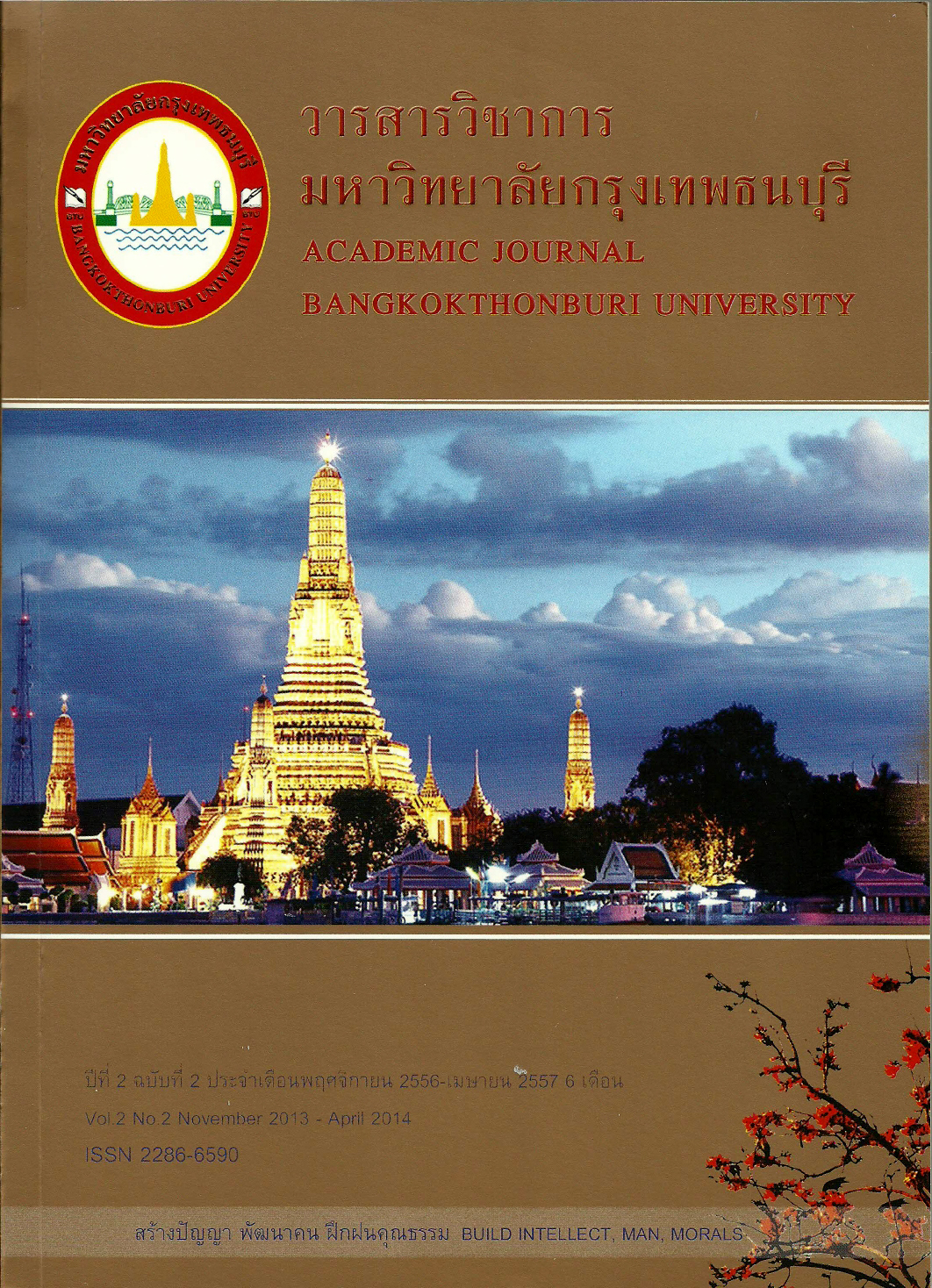การพัฒนาบทเรียนคอมพิวเตอร์ช่วยสอน เรื่อง การนับจำนวน 1-20 เพื่อพัฒนาทักษะทางคณิตศาสตร์ สำหรับนักเรียนชั้นอนุบาลปีที่ 2 โรงเรียนวัดอุดมรังสี
Main Article Content
Abstract
การวิจัยครั้งนี้ มีวัตถุประสงค์ 1) พัฒนาบทเรียนคอมพิวเตอร์ช่วยสอน เรื่อง การนับจำนวน 1-20 สำหรับนักเรียนชั้นอนุบาลปีที่ 2 โรงเรียนวัดอุดมรังสี ให้มีประสิทธิภาพตามเกณฑ์ คือ 80/80 และ 2) เพื่อเปรียบเทียบผลสัมฤทธิ์ทางการเรียนของนักเรียนชั้นอนุบาลปที ี่ 2 กอ่ นเรียนและหลังเรียน กลุม่ ตัวอยา่ ง ที่ใช้ในการวิจัย เป็นนักเรียนชั้นอนุบาลปีที่ 2 โรงเรียนวัดอุดมรังสี สำนักงานเขตหนองแขม กรุงเทพมหานคร จำนวน 30 คน เครื่องมือที่ใช้ในการวิจัยคือบทเรียนคอมพิวเตอร์ช่วยสอน เรื่อง การนับจำนวน 1-20 สำหรับ นักเรียนชั้นอนุบาลปีที่ 2 แบบทดสอบวัดผลสัมฤทธิ์ทางการเรียน และแบบประเมินคุณภาพบทเรียน คอมพิวเตอร์ช่วยสอน สถิติที่ใช้ในการวิเคราะห์ข้อมูล ได้แก่ ค่าเฉลี่ย ค่าร้อยละ ค่าเบี่ยงเบนมาตรฐาน ค่าความยากง่าย ค่าอำนาจจำแนก ความเชื่อมั่นของแบบทดสอบ ค่าเฉลี่ยดัชนีความสอดคล้อง และ ค่าทดสอบที
ผลการวิจัยสรุปว่า
1. บทเรียนคอมพิวเตอร์ช่วยสอน เรื่อง การนับจำนวน 1-20 สำหรับนักเรียนชั้นอนุบาลปีที่ 2 มี ประสิทธิภาพ 84.83/90.17 ซึ่งเป็นไปตามเกณฑ์ที่ 80/80 ที่ตั้งไว้
2. ผลสัมฤทธิ์ทางการเรียนหลังเรียนด้วยบทเรียนคอมพิวเตอร์ช่วยสอน เรื่อง การนับจำนวน 1-20 สำหรับนักเรียนชั้นอนุบาลปีที่ 2 หลังเรียนสูงกว่าก่อนเรียนอย่างมีนัยสำคัญทางสถิติที่ระดับ .01
The Development of Computer Assisted Instruction Counting Lesson From One-Twenty for Development Skills in Mathematics in 2nd Grade of Kindergaten Students of Watudomrungsee School
The purposes of this research were to 1) development a computer Assisted Instruction Counting Lesson From One-Twenty for Mathematical skills Development in the 2nd grade of Kindergarten students of Watudomrungsee School to meet the basic requirement of 80/80, and 2) compare the academic achievement of teaching with the computer assisted instruction program before and after. The research sample were taken in 30 students from the 2nd grade of Kindergarten students at Watudomrungsee School, Nong-khame District, Bangkok. The research instruments consists of the assessment of computer assisted instruction program with the quantitative evaluation for the tools. The collected data were statistically analyzed by mean score, percentage, standard deviation, difficulty index, discrimination index, confidential interval, consistency and t-test.
The findings of the study were as follows:
1. The efficiency of teaching by using computer assisted instruction program was 84.83/90.17 which better than the hypothesized criteria of 80/80.
2. The academic achievement of post-test after using the computer assisted instruction program was significantly higher than the pre-test at p<0.01.


